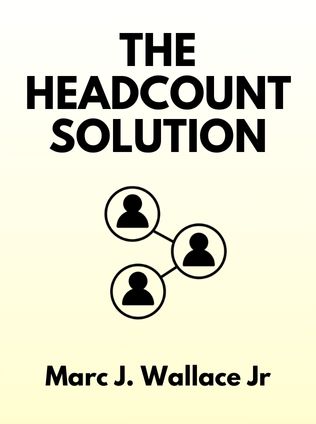
The Headcount Solution
How to Cut Compensation Costs and Keep Your Best People
By Marc J. Wallace Jr.,
Published 12/2002
About the Author
"The Headcount Solution" is authored by N. Fredric Crandall, Ph.D., and Marc J. Wallace Jr., Ph.D., who are founding partners of the Center for Workforce Effectiveness. Both authors are renowned experts in workforce management and organizational behavior. With decades of experience, they have advised numerous companies on managing human capital, particularly during times of economic difficulty. Their insights are rooted in extensive research and practical experience, making their guidance both reliable and actionable. Margaret Crane and Barbara Ballinger Buchholz, business journalists and authors, contributed to the book, bringing their expertise in business writing and providing real-world examples and case studies to support the strategies discussed.
Main Idea
"The Headcount Solution" provides a strategic framework for companies facing financial crises that necessitate cost reductions. The book's core message is that layoffs should be the last resort in any cost-cutting strategy. Instead, the authors advocate for a thoughtful, measured approach to reducing compensation costs while preserving the morale and dignity of employees. The book outlines a seven-step plan that includes preparation, strategic planning, and implementing various cost-saving measures before considering layoffs. The emphasis is on maintaining the company's core talent and positioning the organization for a swift recovery once the crisis has passed.
Table of Contents
- 1. Prepare Your Organization for What's in Store
- 2. Plan for Three Rounds of Compensation Cost Cutting
- 3. Decide Whom to Cut and Whom to Keep
- 4. Implement Across-the-Board Cuts
- 5. Implement Alternative Work Arrangements
- 6. Implement Layoffs
- 7. Help Survivors Cope and Get Back to Business
Analyzing and Explaining Each Step in Depth
1. Prepare Your Organization for What's in Store
The first step emphasizes the importance of transparent communication during a financial crisis. The authors highlight that senior leadership must quickly and accurately convey the severity of the situation to all employees. This step is crucial for maintaining trust and preventing the spread of rumors that can exacerbate uncertainty. The authors provide five key guidelines for delivering bad news:
- Communicate frequently to acclimate employees to changes.
- Develop a clear, consistent communication plan to prevent misinformation.
- Decide whether HR or legal presence is necessary during sensitive communications.
- Always provide factual information and avoid making promises that cannot be guaranteed.
- Continuously monitor employee morale and address concerns promptly.
Honest communication is crucial, as the authors note:
"Telling the truth to employees always works best, whether the news to be shared is good or bad." — Crandall & WallaceThis approach helps maintain a transparent and trustworthy environment, which is essential for keeping the workforce engaged and committed during tough times.
2. Plan for Three Rounds of Compensation Cost Cutting
The second step involves a structured approach to cost-cutting, divided into three distinct rounds:
Sign up for FREE and get access to 1,400+ books summaries.
You May Also Like
Rich Dad Poor Dad
What the Rich Teach Their Kids About Money - That the Poor and Middle Class Do Not!
By Robert T. KiyosakiFreakonomics
A Rogue Economist Explores the Hidden Side of Everything
By Steven D. Levitt and Stephen J. DubnerThe Lean Startup
How Today's Entrepreneurs Use Continuous Innovation to Create Radically Successful Businesses
By Eric RiesWho Moved My Cheese?
An Amazing Way to Deal with Change in Your Work and in Your Life
By Spencer Johnson, M.D.Factfulness
Ten Reasons We're Wrong About the World – and Why Things Are Better Than You Think
By Hans RoslingMake Your Bed
Little Things That Can Change Your Life...And Maybe the World
By William H. McRaven



















